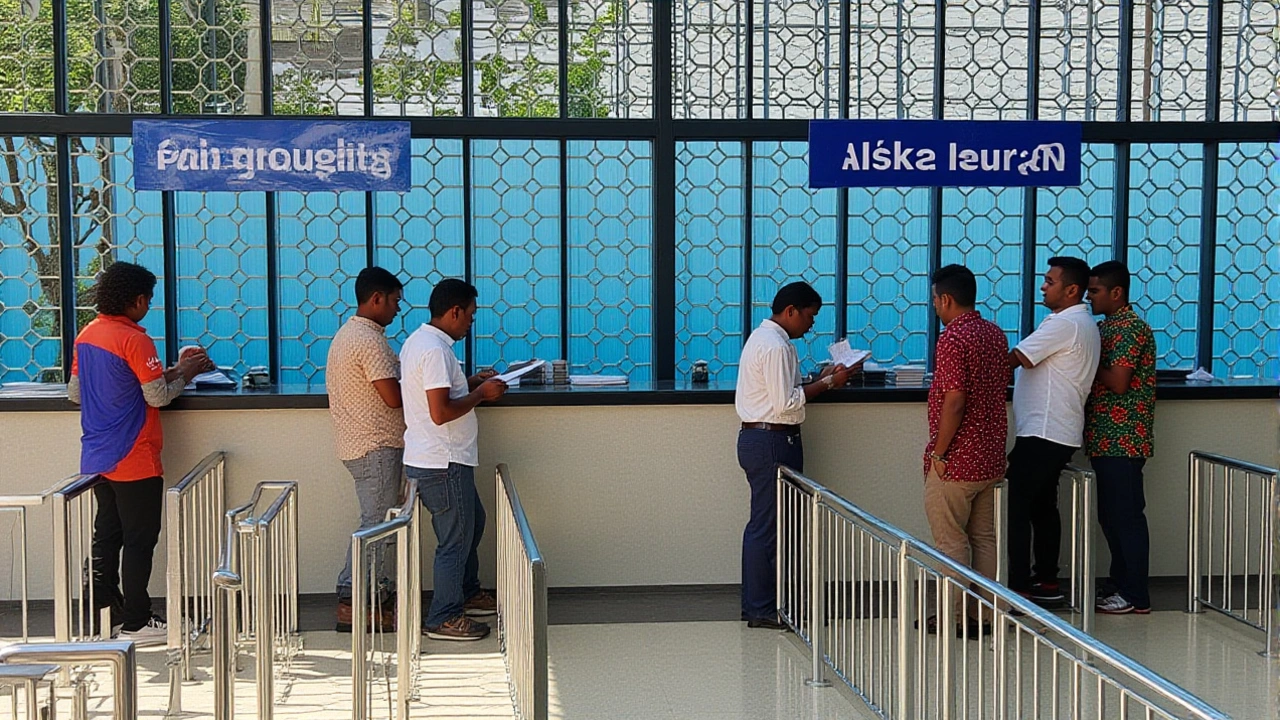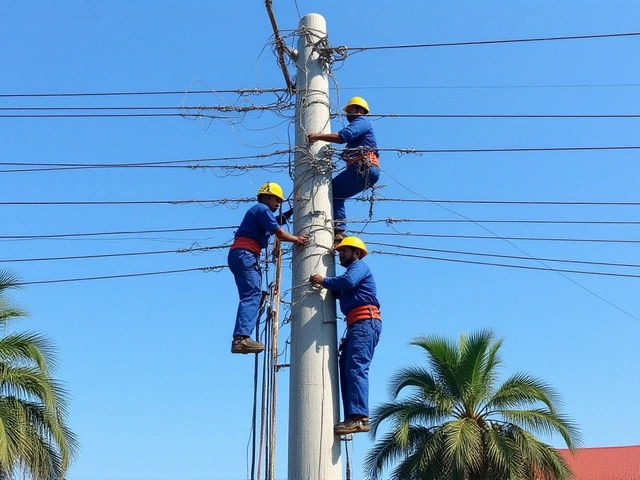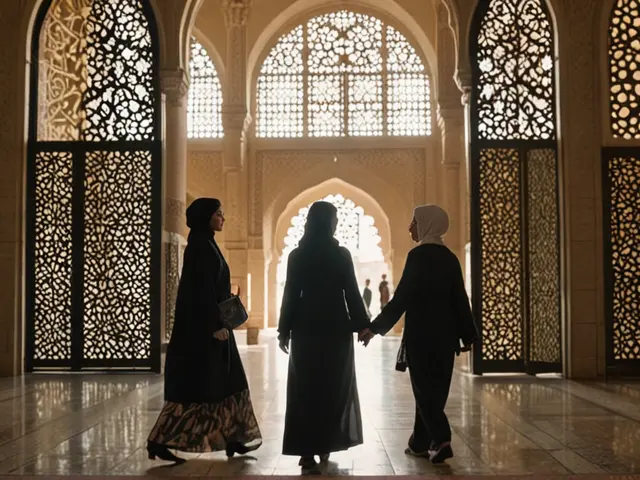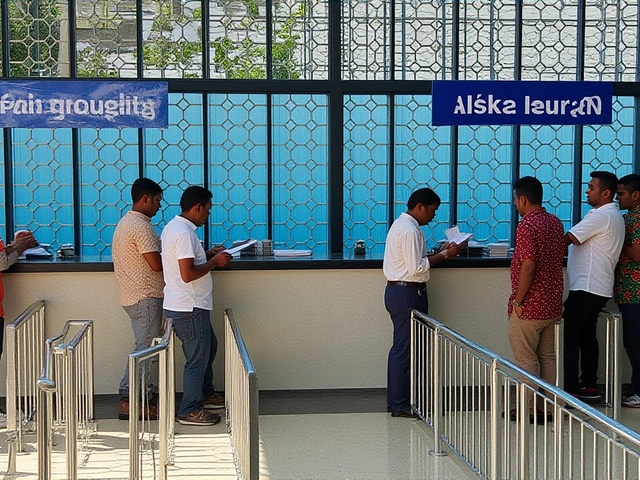When Eng. Bruno Ching'andu, Managing Director and CEO of TAZARA, stepped up to the podium at the Zambia International Mining and Energy Conference (ZIMEC 2025)Kitwe, Zambia, he announced a $1.4 billion partnership that could rewrite the destiny of a railway once hailed as Africa’s lifeline.
The deal pairs Tanzania, Zambia and China Civil Engineering Construction Corporation (CCECC) in a 30‑year concession to rebuild the 1,860‑kilometre TAZARA railway that stitches Dar es Salaam to New Kapiri Mposhi. Why should anyone outside the Copperbelt care? Because the rails are the cheapest shortcut for moving the region’s copper and cobalt to global markets, and the new investment promises to slash shipping costs, boost export volumes and challenge rival corridors backed by the United States and Japan.
Background: A Railway Born of Cold War Cooperation
Constructed between 1970 and 1975 with hefty Chinese assistance, the TAZARA line was once a political triumph and a commercial artery. Over the decades, however, neglect turned the tracks into a rust‑ridden obstacle. By 2020, the line could move only a fraction of its design capacity, leaving Zambian miners scrambling to truck ore to costly South African ports.
Recent years saw a cascade of studies warning that without a massive overhaul, the corridor would become a dead weight. The Tanzanian Ministry of Transport even earmarked $200 million for a limited upgrade in 2023, but the sum barely scratched the surface of the $1 billion‑plus bill needed for full rehabilitation.
Deal Details and Financial Breakdown
The agreement, signed on September 29, 2025, splits the $1.4 billion into two buckets. First, $1 billion is slated for total track restoration—from the coastal hub of Dar es Salaam, Tanzania to the heart of the Copperbelt at New Kapiri Mposhi. The second $0.4 billion will fund the purchase of 32 brand‑new locomotives, 762 wagons and a set of passenger coaches, plus upgrades to workshops in both Tanzania and Zambia.
- Track rehab: $1 billion, covering rail replacement, ballast renewal and signalling upgrades.
- Rolling stock: $400 million for new locomotives, wagons and 16 passenger coaches.
- Concession length: 30 years, with periodic major overhauls built into the contract.
- Investment phases: Initial $1.1 billion upfront, followed by $238 million reinvested over the first ten years.
“This partnership is a game‑changer for the entire region,” said John Mwenda, Director of Trade at Tanzania’s Ministry of Investment during a press briefing on October 2. “We’re not just fixing rails; we’re unlocking new economic corridors.”
Stakeholder Perspectives
Mining giants have welcomed the news. First Quantum Minerals issued a statement that the upgraded line could shave up to $15 per tonne from transport costs, translating into an estimated $200 million annual savings.
Conversely, some civil‑society groups raise eyebrows about the 30‑year concession, fearing limited local job creation. “We need to ensure that Zambian workers get the training and employment that this project promises,” warned Grace Nkhoma, Head of Advocacy at African Development Watch.
The Chinese side emphasizes the “win‑win” nature of the deal. A spokesperson for CCECC, Li Wei, noted that the company will also set up a local engineering training centre in Lusaka, a move that could boost the region’s technical capacity.
Implications for Regional Trade and Geopolitics
By reviving TAZARA, Tanzania and Zambia are betting on a trade route that bypasses South Africa’s congested ports and offers a shorter maritime leg to the Indian Ocean. This could tilt the balance in the competition among three major trans‑African corridors:
- Lobito Corridor: US‑backed, linking Angola’s Atlantic coast to the DRC and Zambia.
- Nacala Corridor: Japan‑supported, stretching from Malawi to the Nacala Port in Mozambique.
- TAZARA Corridor: Now bolstered by Chinese capital, targeting the Dar es Salaam gateway.
Analysts at the China Global South Project argue that the investment reinforces Beijing’s Belt and Road ambitions, granting easier access to the copper that powers electric vehicles and renewable‑energy technologies.
Future Outlook and Next Steps
Construction is slated to begin in early 2026, with the first phase—track replacement on the Tanzanian segment—targeted for completion by mid‑2028. The rolling‑stock order has already been placed with a German manufacturer, and delivery is expected to start in Q4 2027.
Meanwhile, the TAZARA board has set up a joint monitoring committee comprising Chinese engineers, Tanzanian officials and Zambian representatives to oversee quality and timelines. The committee will report quarterly to the ministries of transport in both countries.
Should the project stay on track, the railway could handle up to 30 million tonnes of cargo annually by 2035, a figure that would dwarf current volumes and reshape the logistics landscape of Southern Africa.
Frequently Asked Questions
How will the TAZARA revival affect Zambian copper exporters?
Exporters stand to cut transportation costs by roughly $15 per tonne, potentially saving $200 million each year. Faster, more reliable shipments could also boost contract volumes with overseas smelters, strengthening Zambia’s position in the global copper market.
What jobs will the project create for local communities?
CCECC has pledged to establish a training centre in Lusaka, aiming to employ up to 1,500 local workers during construction and another 300 in ongoing maintenance once the line is operational.
Will the upgraded railway compete with the Lobito and Nacala corridors?
Experts say the TAZARA route offers a shorter sea‑leg to the Indian Ocean, making it attractive for exporters targeting Asian markets. While the Lobito and Nacala corridors will remain important, the revived TAZARA could capture a sizable share of mineral traffic heading east.
What are the environmental considerations of the project?
The concession includes a mandate for regular environmental monitoring. Upgraded locomotives are expected to be more fuel‑efficient, reducing emissions per tonne‑kilometre compared to older diesel units.
When is the first phase of the railway expected to be operational?
The initial track‑rehabilitation segment in Tanzania should be completed by June 2028, with freight services commencing shortly thereafter. Full line capacity is projected for 2035.








chandu ravi
October 9, 2025 AT 13:17The rail revival could finally give the copper miners some breathing room 😔.
Imagine the relief when freight costs drop.
Vikramjeet Singh
October 12, 2025 AT 19:17It's a solid move for regional logistics.
deepak pal
October 16, 2025 AT 01:17Totally agree, the cheaper route will keep the supply chain humming.
KRISHAN PAL YADAV
October 19, 2025 AT 07:17From an engineering standpoint, the $1 billion track rehab will involve rail head replacement, ballast consolidation, and a signal modernization suite that aligns with IEC 61375 standards.
Deploying modular maintenance depots will also slash downtime, boosting line availability to upwards of 95%.
ಹರೀಶ್ ಗೌಡ ಗುಬ್ಬಿ
October 22, 2025 AT 13:17Sure, the money looks good on paper but a 30‑year concession risks locking the region into a single supplier's terms, potentially sidelining local labor growth.
Neeraj Tewari
October 25, 2025 AT 19:17When we speak of tracks, we're really mapping the arteries of progress, each steel strand a promise that trade can flow freer than the ideas that bind us.
sunaina sapna
October 29, 2025 AT 01:17The recent $1.4 billion investment in the TAZARA corridor represents a watershed moment for Southern African freight logistics.
By allocating one billion dollars to comprehensive track rehabilitation, the partners address the chronic degradation that has limited capacity for decades.
The remaining four hundred million earmarked for rolling stock will not only replace aging locomotives but also introduce energy‑efficient models that comply with contemporary emissions standards.
Moreover, the establishment of a training centre in Lusaka promises to cultivate a skilled workforce capable of sustaining operations over the thirty‑year concession.
From a macro‑economic perspective, reduced transportation costs per tonne translate directly into higher net export revenues for both Tanzania and Zambia.
This, in turn, enhances fiscal buffers that can be redirected toward social development programs.
The corridor’s strategic position, linking the Indian Ocean to the mineral‑rich Copperbelt, offers exporters a shorter maritime leg compared with routes through South Africa.
Such a geographic advantage is likely to attract new foreign direct investment into mining and ancillary industries.
Environmental considerations have also been integrated, as modern locomotives are expected to emit markedly less CO₂ per tonne‑kilometre.
Continuous monitoring by the joint committee will ensure compliance with both safety and ecological benchmarks.
Stakeholder engagement, as reflected in the public statements of civil‑society groups, underscores the importance of transparent job creation metrics.
While some observers caution against the duration of the concession, the contractual provisions for periodic overhauls mitigate the risk of technological obsolescence.
Historical parallels to the original Cold War‑era construction illustrate how international partnerships can evolve to serve contemporary development goals.
In sum, the revitalization of TAZARA is poised to become a catalyst for regional integration, fostering trade diversification beyond traditional routes.
The projected capacity of thirty million tonnes by 2035 will undeniably reshape the logistics landscape, positioning the corridor as a cornerstone of Africa’s export architecture.
Ritesh Mehta
November 1, 2025 AT 07:17We must watch who benefits from the deal
Dipankar Landage
November 4, 2025 AT 13:17Wow this is huge! The whole continent will feel the tremors of this new rail.
Vijay sahani
November 7, 2025 AT 19:17Picture a sleek, roaring train cutting through savannahs, its wheels humming like a giant heart that pumps copper straight to the world market.
Pankaj Raut
November 11, 2025 AT 01:17Yo that vibe is spot on, the new line will literally be the backbone of the next mining boom.
Rajesh Winter
November 14, 2025 AT 07:17It’s amazing how a single railway can spark so much hope across borders
Archana Sharma
November 17, 2025 AT 13:17Great news 👍 looking forward to the jobs it will bring!
Vasumathi S
November 20, 2025 AT 19:17The revitalization of TAZARA invites us to reconsider the ethical dimensions of infrastructure development, balancing economic imperatives with social responsibility.
Anant Pratap Singh Chauhan
November 24, 2025 AT 01:17Sounds promising for the miners.
harsh srivastava
November 27, 2025 AT 07:17Interesting plan but will need strict oversight
Praveen Sharma
November 30, 2025 AT 13:17Will the new trains run on greener fuel